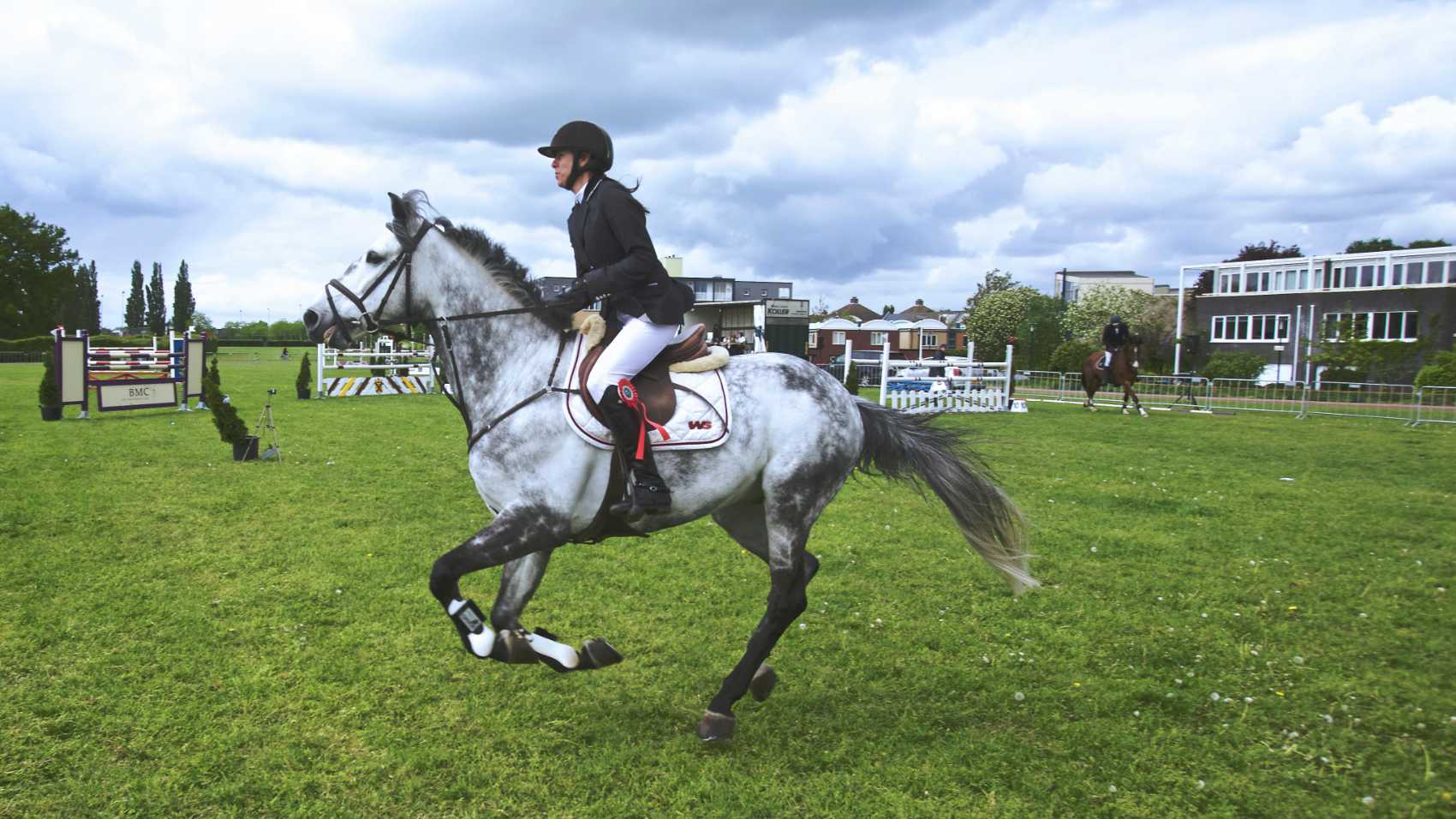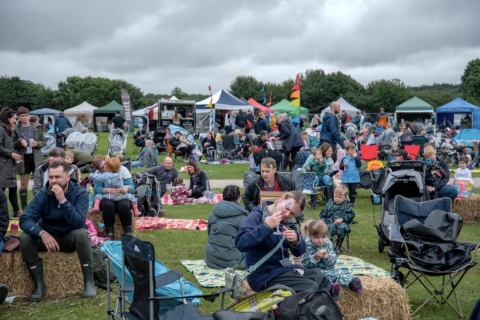For horse riding enthusiasts, it is crucial to have a suitable menage for horses or what is commonly called a riding arena. However, as the cost of construction materials constantly changes, it can be difficult to determine the average cost of building an outdoor riding arena. In this section, we will provide estimated costs for three types of outdoor riding arenas: basic, mid-range, and high-end. This will help readers gain a better understanding of the financial investment needed for their dream riding arena.
1. Basic Outdoor Riding Arena
Building a basic outdoor riding arena involves several key steps to ensure a functional and safe space for riding and training horses:
- Site preparation: Clear the area of any vegetation or debris and level the ground.
- Perimeter construction: Install sturdy fencing to define the boundary of the arena.
- Drainage planning: Assess the natural slope of the land and create a system for proper water drainage.
- Foundation installation: Lay down a compacted layer of gravel or sand to create a stable base.
- Surface material: Choose a suitable riding surface, such as sand, rubber, or a mixture, and spread it evenly over the foundation.
- Maintenance considerations: Factor in ongoing maintenance tasks, such as watering, leveling, and grooming the surface.
2. Mid-range Outdoor Riding Arena
To build a mid-range outdoor riding arena, follow these steps:
- Determine the size and dimensions that suit your needs and available space.
- Select a suitable riding surface, such as all-weather sand, rubber, or a mixture of both.
- Ensure proper drainage and foundation to prevent water accumulation and maintain stability.
- Consider the location and accessibility for convenience and ease of use.
- Estimate the cost, which typically ranges from £10,000 to £30,000, depending on factors like size and materials used.
- Account for additional costs like maintenance, permits, lighting, and fencing.
- To save money, consider DIY construction, using recycled materials, comparing prices from different suppliers, and exploring alternative riding surfaces.
3. High-end Outdoor Riding Arena
A high-end outdoor riding arena offers top-notch features and amenities for the discerning equestrian. Here are the key steps involved in building a high-end outdoor riding arena:
- Site preparation: Clear the area, level the ground, and ensure proper drainage.
- High-quality materials: Use premium materials for the riding surface, such as specialized footing or all-weather synthetic surfaces.
- Fencing and gates: Install sturdy and aesthetically pleasing fencing and gates that complement the arena.
- Lighting and electrical: Incorporate state-of-the-art lighting systems for nighttime riding and electrical outlets for convenience.
- Design and aesthetics: Pay attention to the design details, landscaping, and other aesthetic elements to create an attractive and functional space.
- Additional amenities: Consider adding seating areas, viewing platforms, or even covered areas for spectators.
Investing in a high-end outdoor riding arena ensures a luxurious and professional environment for training and enjoying equestrian activities.
What Are Some Additional Costs to Consider?
While the initial cost of building an outdoor riding arena may seem daunting, there are additional expenses that must be taken into account. In this section, we will discuss the various costs that come with owning and maintaining an outdoor riding arena. From regular maintenance and upkeep to necessary permits and zoning regulations, we will cover all the potential expenses that may arise. Additionally, we will explore the costs of lighting and electrical installation, as well as the necessary fencing and gates for the arena. Let’s delve into the details to give you a clearer understanding of the total cost of building and owning an outdoor riding arena.
1. Maintenance and Upkeep
Maintaining and keeping an outdoor riding arena in good condition is crucial for the safety and longevity of the facility.
- Inspect regularly: Conduct routine inspections to identify any issues such as uneven footing, loose fencing, or drainage problems.
- Clean and remove debris: Regularly remove manure, leaves, and other debris from the arena to prevent it from affecting the riding surface.
- Water and level the footing: Adequately water the footing to maintain the correct moisture content and regularly level it to ensure a consistent and safe riding surface.
- Repair and replace: Promptly repair any damage to the fencing, footing, or other arena components. Replace worn-out materials as necessary.
- Manage vegetation: Control weed growth around the arena to prevent them from encroaching on the riding surface and causing damage.
- Implement proper drainage: Ensure proper drainage systems are in place to prevent water accumulation and maintain a dry arena.
2. Permits and Zoning Regulations
When constructing an outdoor riding arena, it is important to consider permits and zoning regulations. Here are the main steps to take into account:
- Research local regulations: Familiarise yourself with the specific permits and zoning requirements for outdoor riding arenas in your area.
- Consult with authorities: Get in touch with the relevant local authorities or government departments to gather information and clarify any doubts or concerns.
- Submit applications: Fill out and submit the necessary permit applications, providing all the required documentation and paying any applicable fees.
- Prepare for inspections: Be prepared for inspections to ensure compliance with the regulations and guidelines.
- Address feedback: If any issues or concerns are raised during the inspection, promptly address them and make any necessary modifications or adjustments.
- Obtain permits: Once all requirements are met, and inspections are successfully completed, obtain the necessary permits before proceeding with the construction.
3. Lighting and Electrical
When building an outdoor riding arena, proper lighting and electrical setup are essential for safety and functionality. Here are some steps to consider:
- Determine the lighting requirements based on the size and intended use of the arena.
- Install proper lighting fixtures that provide adequate brightness and coverage.
- Ensure the electrical system is professionally installed and meets all safety standards.
- Consider energy-efficient options such as LED lights to minimize ongoing costs.
- Incorporate additional electrical outlets for equipment and sound systems.
Proper lighting and electrical setup in an outdoor riding arena enhance visibility, allowing riders to safely navigate and practice even during darker hours of the day.
4. Fencing and Gates
Building a proper fence and installing gates is essential for an outdoor riding arena. Here are the steps to consider:
- Choose the right fencing material, such as wood, vinyl, or electric, based on durability, maintenance, and safety.
- Determine the height of the fence based on the size and type of horses that will be using the arena.
- Install sturdy posts at regular intervals and secure them firmly into the ground.
- Add appropriate fencing boards or wires to enclose the arena, ensuring there are no gaps that horses can get stuck in.
- Install gates at designated entry points, ensuring they are wide enough for easy access and sturdy enough to withstand horse activity.
- Consider adding additional safety features like kickboards or mesh fencing to prevent horses from leaning or sticking their heads through.
- Maintain and regularly inspect the fence and gates for any damage or wear and tear.
How Can You Save Money on Building an Outdoor Riding Arena?
Building an outdoor riding arena can be an expensive project, but there are ways to reduce costs without sacrificing the quality and functionality of the arena. In this section, we will discuss different strategies for saving money on the construction of an outdoor riding arena. From do-it-yourself construction to the use of recycled materials, we will explore various options that can help lower the overall cost. By considering these alternative methods, you can create a riding arena that is budget-friendly while still meeting your needs and standards.
1. DIY Construction
Building an outdoor riding arena through DIY construction can be a cost-effective option for equestrians. Here are some steps to consider when undertaking this project:
- Plan and design the arena, considering factors like size, location, and materials.
- Prepare the site by clearing vegetation, levelling the ground, and ensuring proper drainage.
- Construct a sturdy perimeter fence to ensure the safety of both riders and horses.
- Install a suitable riding surface, such as sand, gravel, or a combination, based on your preferences and budget.
- Add any necessary amenities, such as lighting, watering systems, or seating areas.
- Regularly maintain the arena by grooming the riding surface, addressing drainage issues, and repairing any damages.
2. Use Recycled or Reclaimed Materials
Using recycled or reclaimed materials when building an outdoor riding arena can help reduce costs and environmental impact. Here are steps to consider:
- Assess available materials: Look for locally sourced materials, such as recycled timber, salvaged metal, or reclaimed bricks.
- Quality check: Ensure that the materials are suitable for the intended use and meet safety standards.
- Repurpose existing structures: Consider repurposing old barns or buildings for arena construction.
- Reuse footing materials: If possible, reuse sand or footing materials from previous arenas or construction projects.
- Recycled fencing: Explore options for using recycled materials for fencing, such as repurposed wood or recycled plastic.
3. Shop Around for the Best Prices
When building an outdoor riding arena, it’s important to shop around for the best prices to ensure cost-effectiveness and quality. Here are some steps to help you find the best prices:
- Research: Explore different suppliers, contractors, and construction companies to gather information about their pricing.
- Compare Quotes: Request quotes from multiple sources and compare them to identify the most affordable options.
- Negotiate: Use the quotes you’ve obtained as leverage to negotiate better prices or discounts.
- Consider Reputation: Look for companies with a good reputation for delivering quality work at competitive prices.
- Seek Recommendations: Ask for recommendations from others who have built riding arenas to find reliable and cost-effective options.
4. Consider Alternative Riding Surfaces
Considering alternative riding surfaces for your outdoor riding arena can offer various benefits and cost savings. Here are some steps to consider:
- Evaluate your needs and desired outcomes for the riding surface.
- Research different surface options such as sand, rubber, or synthetic materials.
- Consider the pros and cons of each option, including maintenance requirements and durability.
- Consult with experts or experienced riders to gather their insights and recommendations.
- Obtain quotes and compare the costs of different surface materials.
- Weigh the cost savings against the performance and longevity of the surface.
- Make an informed decision based on your budget and the specific needs of your horses and riders.
By considering alternative riding surfaces, you can find a solution that meets your requirements while potentially saving money on construction and maintenance.






